- +972-4-676-3307
- +972-52-800-8485
- Fax +972-4-6762144
- Moshav Givat Yoav, Golan Heights 12946
So How to Make Shofar Each horn has to go through 14 different stages of production to become a kosher and quality shofar. Let’s learn what the shofar production process is so that you know how to purchase shofars in a smart way
Shofar production process is a long and complex process, where knowledge, skill and experience occupy a central place. Here, at Kol Shofar, each horn undergoes 14 different stages, in order to get at the end of the process, the finest and highest quality Shofar, with a clear sound, excellent finish, and without unpleasant odors that most Shofars have.
To better understand the shofar production process, one must first know what types of shofar there are and what is a kosher shofar? And how do you make a shofar that can fulfill the mitzvah and lead the crowd out of obligation on Rosh Hashanah.
The Rambam (Maimonides) is exceptional in this regard, ruling that only a Shofar made of ram’s horn is a kosher Shofar, and the use of all other horns is prohibited: “The shofar, which is sounded both on Rosh HaShanah and for the Yovel (Jubilee), is a bent ram’s horn. All Shofarot other than that of a ram are not valid.” (Hilchos Shofar, chapter 1, halacha 1)
In recent years, the market has been flooded with non-kosher Shofars made in Morocco and China, glued together in a way only experts can detect. Therefore, it is strongly recommended to purchase a Shofar only from someone you know and trust completely.
After reviewing the main characteristics of a kosher shofar, we will move on to examine the production process closely and also how to prepare a shofar?
The process begins by selecting and sorting the raw material – i.e., the horns. This requires someone with a sharp and skilled eye, who can decide if a particular horn is suitable for making a Shofar, and of which type and sound.
.
The horns consist of two parts:
the bone, which is actually a part of the animal’s skull – the male part. And the horn, which is a sort of shell that surrounds the bone – the female part. After the bone is removed, you get a horn two thirds of which is hollow (the broad side), while the top third is made of keratin (the narrow side).
It is interesting to note that all animals that have horns are kosher animals. Although not all horns can be used for making Shofars – there are certain animals, such as the reindeer, whose horns are made entirely of bone, nevertheless the deer is a kosher animal.
Most Shofars are made of the horns of a ram – an adult male sheep.
There are other horns used for making Shofars, such as the Kudu’s (a large antelope found in the southern parts of Africa), goat’s and ibex’s horns, and other exotic horns from different parts of the world.
And to the question, how do you make a shofar? It starts with bringing the horns to Israel from different parts of the world is an expensive and difficult logistical task, since the horn is not an “off the shelf” product that can simply be ordered. Horns are imported from outside the country, since there are not enough horns of various sizes in Israel. After picking the horns, the bone is removed, and they are then sterilized under veterinary supervision. It is important to note that animals are not killed for their horns, the horns are a by-product of slaughtering animals for food.
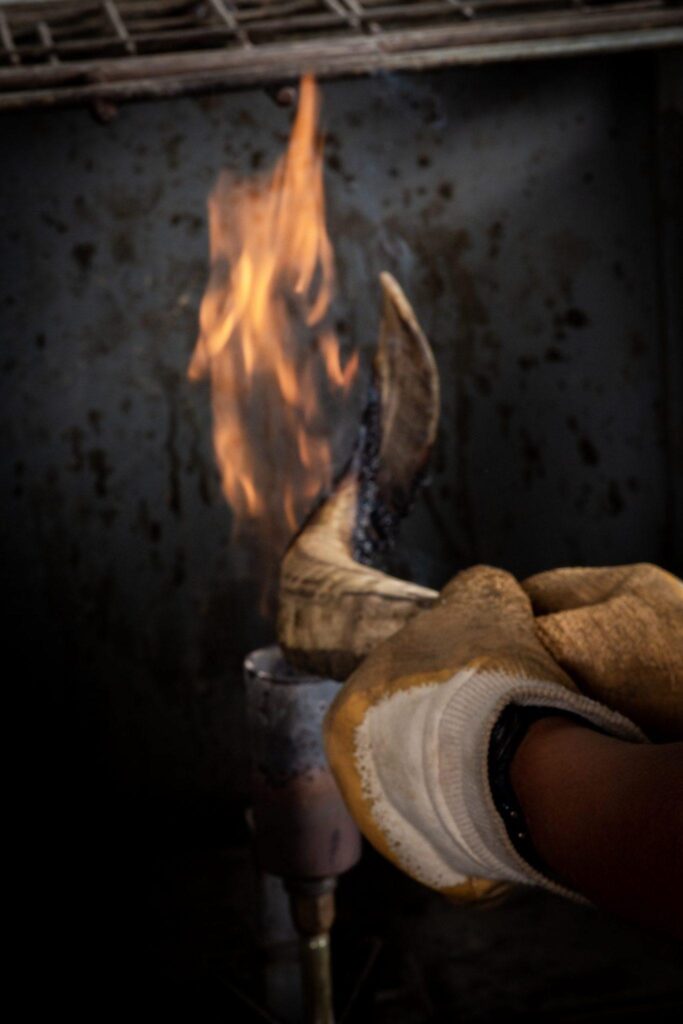
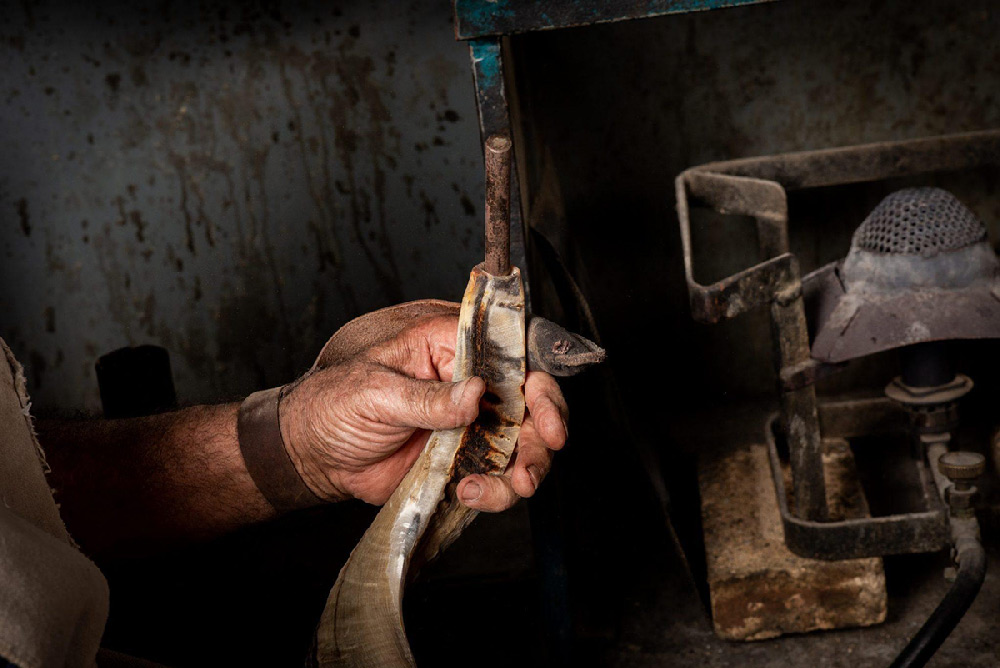
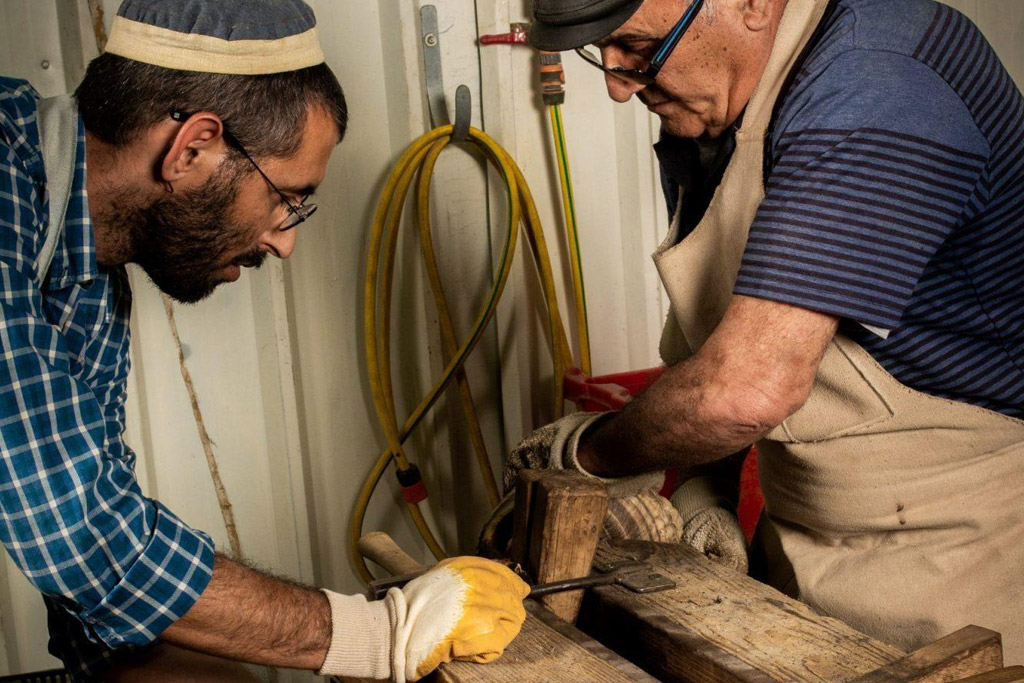
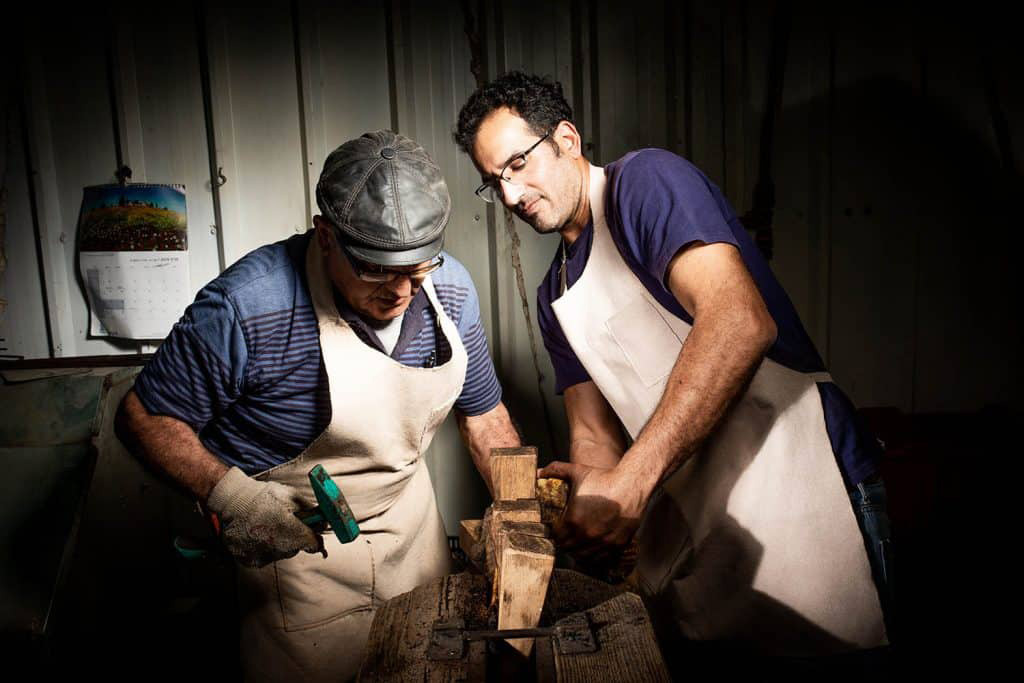
The first stage of work consists of straightening the narrow side of the horn, which is made of keratin, in order to drill and reach the hollow part of the horn. We straighten the horn by heating it until it softens, and then using a press to straighten its curvature and allowing it to cool down. This is a very intricate stage, requiring high skill and sensitivity, since using too much strength might pierce the horn or break it.
Each horn is unique, and therefore it takes a great skill to identify each horn, taking into account its flexibility, depth, thickness and many other characteristics, in order to achieve the best results without disqualifying it.
The main point of the shofar manufacturing process is the mouthpiece is the heart of the shofar and it should fit the mouth and lungs of the person holding the shofar.
Making the mouthpiece is a complex and delicate task, that involves many trade secrets. We produce Shofars with different mouthpieces – wide, round, narrow, elliptical ones and more – to achieve the best match for the Ba’al Teki’ah.
Many Shofar owners bring their Shofars to us, and ask that we adjust them to their demands, including tuning the Shofar sound.
Drilling the Shofar is also a highly skilled act – you have to locate the hollow part of each horn and drill it accordingly. The longer the drill hole, the harder and more complicated the drilling. ny wrong movement might cause the drill to pierce the Shofar and disqualify it. Some Shofars require drilling holes of 30 cm and more.
The next step in the process is polishing the shofar, here you decide what its appearance will be. Each Shofar undergoes 5 different sanding stages: rough, medium and delicate, plus two stages of brushing, medium and delicate Then, the Shofar goes through two stages of polish by flapwheels, that give the Shofar its shining appearance.
Some Shofars keep their natural texture, while others are polished until they are completely smooth. Anyone can choose the amount of polish they like.
There are many variables in the horn that affect the sound of the shofar, such as the size of the horn, its thickness, the size of the resonator box, the length of the bore and more. At Kol Shofar, we specialize in tuning and improving the sound of the Shofar. Thanks to our ample knowledge and skill, we know what is the best sound your Shofar can make and how to produce it.
Many people bring their Shofars to us, and ask us to adjust them and improve their sound. Now that you know what the shofar manufacturing process is, when you come to be interested in where to buy a shofar, you will be able to better appreciate its quality. For more information about shofar
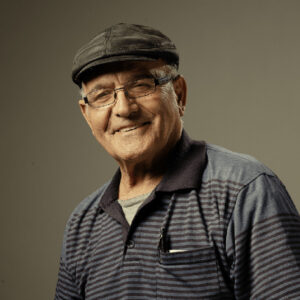
The Shofars at Kol Shofar are meticulously handcrafted in our family workshop, paying maximum attention to the highest level of quality, to Kashrut, ease of blowing, cleanliness and producing a special sound. Our customers say they can recognize our Shofars immediately anywhere in the world, due to our unique handprint.